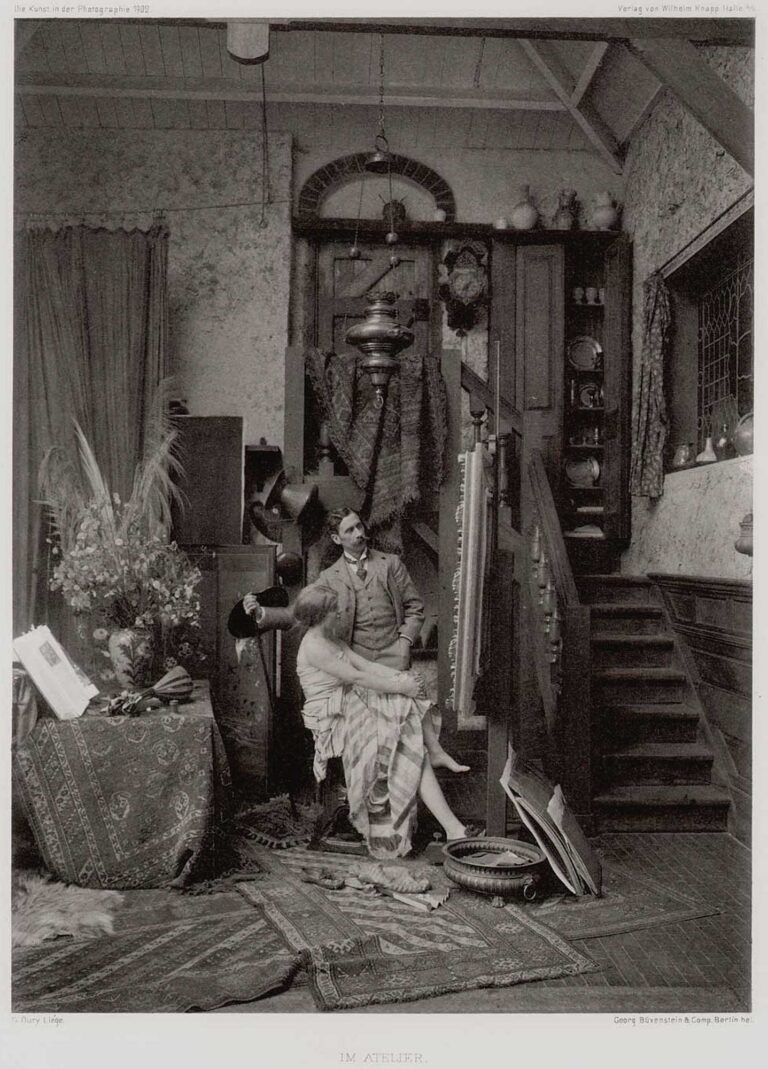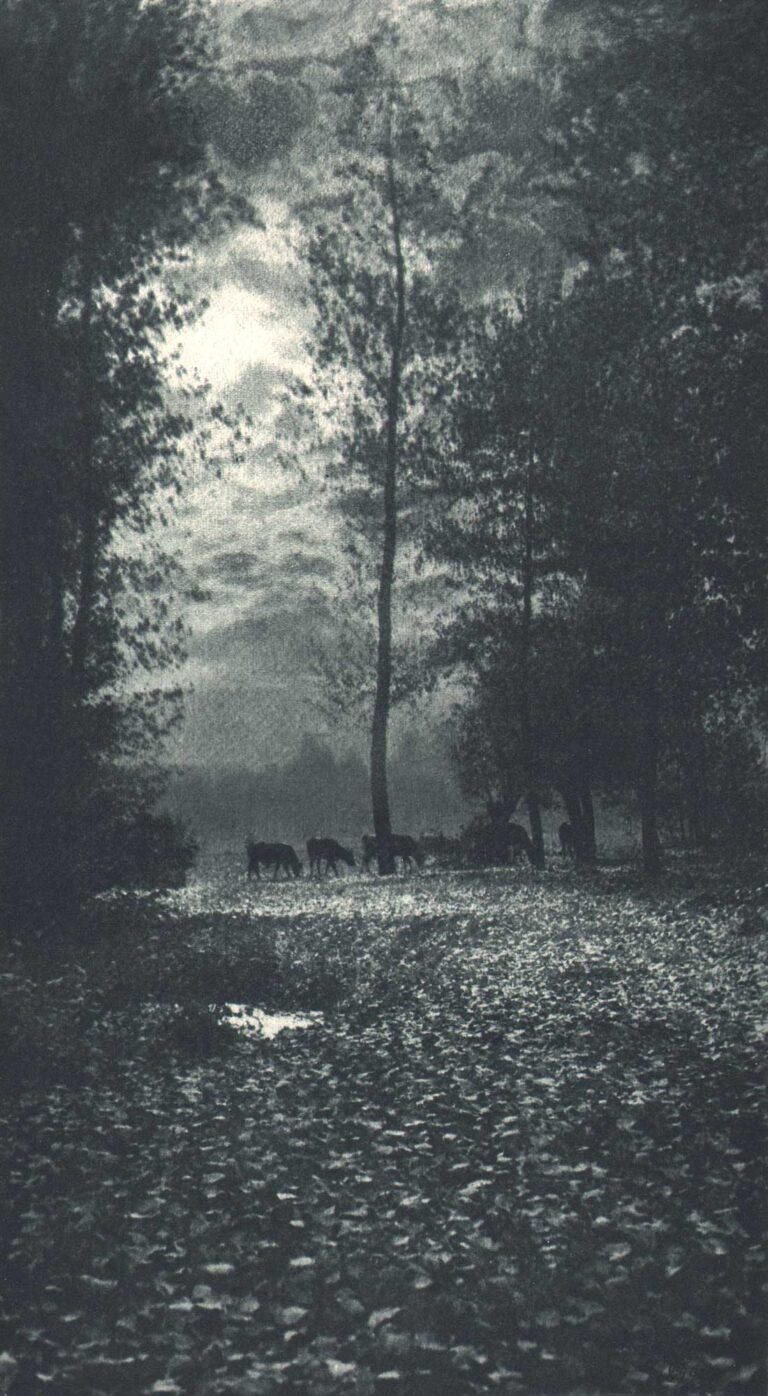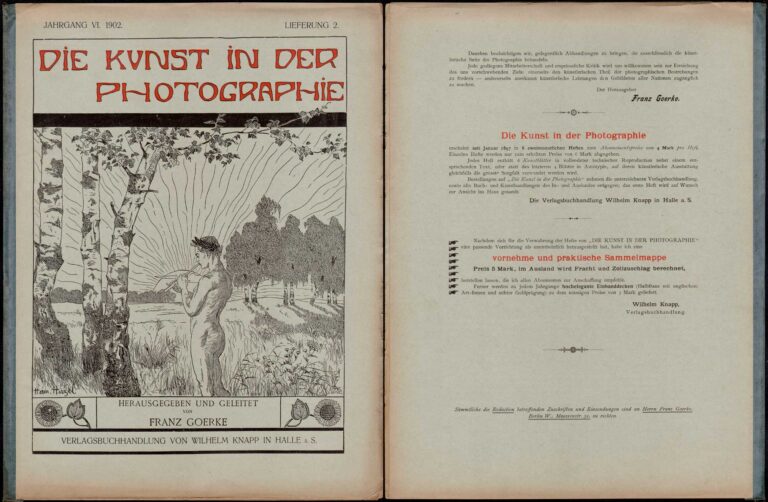
By W.M. Hollinger & Co., New York
William M. Hollinger, who maintained the commercial photographic studio W.M. Hollinger & Co. at 518 Fifth Ave. in New York City, was an active participant in the Camera Club of New York in the late 1890’s. It is not known if he was actually a member of the organization, but the club mounted an exhibition of his portrait work from October 12-25, 1898, later described in the journal Camera Notes by club lantern slide director William M. Murray for the January, 1899 issue. (Vol. 2 No. 3: see: The Hollinger Portraits: p. 103) Two portraits by Hollinger, reproduced as halftones, including Murray in this issue as well as a portrait of club president William D. Murphy in the April, 1899 issue also appeared. Murray then followed his January critique with an essay on Hollinger for the April issue titled Mr. W. M. Hollinger on Photographic Portraiture. The essay distills comments Hollinger made during a regular club meeting to members on November 8, 1898. It is interesting to note Hollinger gives credit to amateur photographers for their methods, which he embraced in his own business practices. We have transcribed the article, which appeared on pages 160-161, in full here:
Mr. W. M. Hollinger on Photographic Portraiture.
The announcement that Mr. Hollinger would lecture on portraiture, which his recent exhibition at the club rooms had demonstrated was a subject he was peculiarly qualified to elucidate, drew a large audience to the regular meeting on November 8, notwithstanding the fact that it was the night of a very exciting gubernatorial election. The lecture was in the form of a familiar talk, and we regret that we cannot reproduce it in Mr. Hollinger’s own language, though even a verbatim report might fall far short of conveying the meaning of such congenial colloquial discourse. No one who saw the lecturer on this occasion would have guessed that he was a veteran of more than a quarter of a century, but Mr. Hollinger began by saying he had been a professional portrait photographer for twenty-seven years, only the last two of which had been spent in New York. He confessed, moreover, that it had taken him nearly the whole of this long experience to find out what a portrait really ought to be. He paid the amateurs a high compliment by asserting that it was the observation of their work, and the consideration of the ideas advanced by them, that had induced him to discard nearly all the appointments of the professional studio, and to put himself on the same plane with them in the adoption of his present photographic methods. We might think this statement gross “flathery” were not there one amateur, at least, living in Mr. Hollinger’s native town, whose precepts and practice any professional might profitably follow. ✻ Whatever the source of this inspiration, however, it is certain that becoming disgusted with the ephemeral character of conventional studio work (for he observed that no matter how good his portraits appeared at first sight, in a few years they were out of date and uninteresting even as a likeness) he set himself diligently to inquire- “What is a picture? Why is it that a portrait by one of the old masters is esteemed to-day even more highly than when its subject lived on the earth, and his hat and cloak were in the latest fashion of the time? Why cannot I make my portraits so that they, too, will endure into succeeding generations?” So Mr. Hollinger went into the art galleries and studied what he saw there. He found that the pictures that attracted universal attention were those that not only exhibited design, purpose, nice lines, forms, masses, color, action but beyond all these conveyed something better still, which he took to be -sentiment; and that the deeper the sentiment, the greater the interest to every member of the human family; so that while the picture would please the sculptor, the painter and the architect, by appealing to the intellect, it would please the masses more by appealing to their hearts. He went on searching the good qualities which go to make up a picture, taking note, also, of the bad features which must be eliminated before it can be a true and lasting work of art. And this is the lesson he learned and which he would teach to every aspiring student of portrait photography. It is required of a portrait, first of all, that it be truthful; it must be a likeness, for that is the primary object of all portraiture. It should express sentiment, for feeling is the quality which makes it of interest to other people than the subject. It should conform to the principles of art; so as to appeal in its design and execution to the higher intelligence of humanity. It should, finally, possess individuality, to mark the fact that it owes its existence to a man and not to a machine. These are the properties it must have; but there are other things that should be conspicuous, as it were, by their absence. Truthfulness is essential to a picture; but its truth must not be a slavish imitation of nature. It must have sentiment; but the sentiment must not degenerate into sameness. It must have art; but its art must not be commonplace. It must have individuality; but its individuality must not be merely a mannerism. So that a perfect picture, or a perfect portrait, is made up of a number of positive and negative elements, gathered together in harmonious union; to speak mathematically, it is an algebraic sum of the plus quantities, truth, sentiment, art, individuality, and the minus quantities, servile imitation, sameness, commonplaceness, mannerism.
In enlarging on these ideas Mr. Hollinger gave the audience many valuable thoughts and hints, and especially drew attention to the psychological truth, that every human being, young or old, has a beauty peculiar to himself-a soul-and that it is the mission of the portrait painter and the portrait photographer to find that soul and express its beauty in his picture: that this soul makes its appearance in proportion as the model thaws out of his consciousness; and therefore much depends upon the tact and ability of the artist, whose mode and conduct is but too apt to be reflected in the expression of his sitter as in a mirror. That is, if you want your portrait work to look pleasant, it is necessary to be sweet and pleasant yourself. From the art standpoint Mr. Hollinger spoke of composition and its importance, but, at the same time, uttered a caution against trying to make one’s picture fit a plan; instancing the folly of placing subjects in the midst of elaborate setting and forcing them into acting a part. He said, Do not be too anxious to make compositions. Know what you want, and knowing that, wait patiently; keep your eyes open for effects as they happen, and then record them without delay. The lecture closed with an earnest plea for individuality, to which end he exhorted his hearers to study continually the works of the master, not to imitate those works but to emulate them; to think art thoughts; to put themselves in the mood to do high and great things; and then, when in addition to truth, and sentiment, and art, they endowed their picture with some of the noble part of themselves, they could sign their names to the work in the consciousness that it was not a weak echo of Rembrandt or Reynolds or Vandyke, but yet something to be treasured by the world in times to come, done by the modern and original artist, Brown, or Jones, or Robinson.
W.M. M. (William M. Murray)
✻ Mr. J M. Appleton, of Dayton, Ohio, whose beautiful series of portraits was deservedly medaled at the late American Institute Exhibition.
titled within lower plate impression:
By W.M. Hollinger & Co.
New York.



